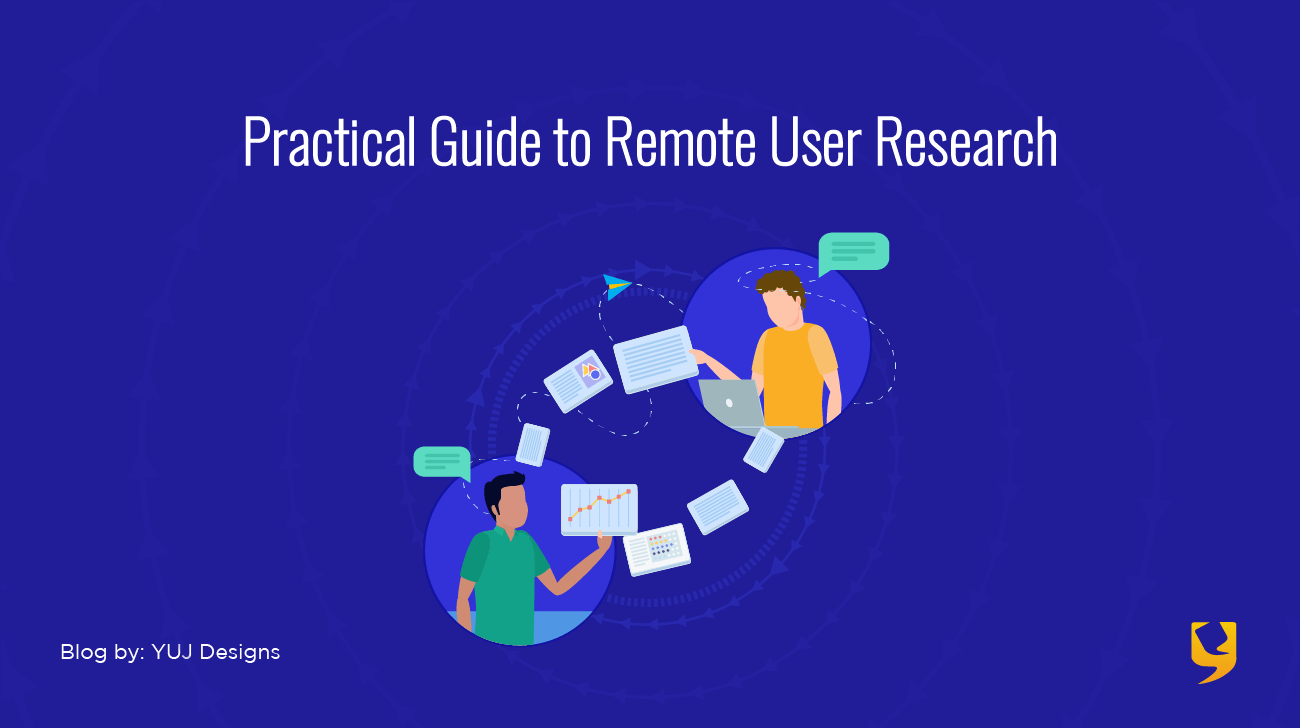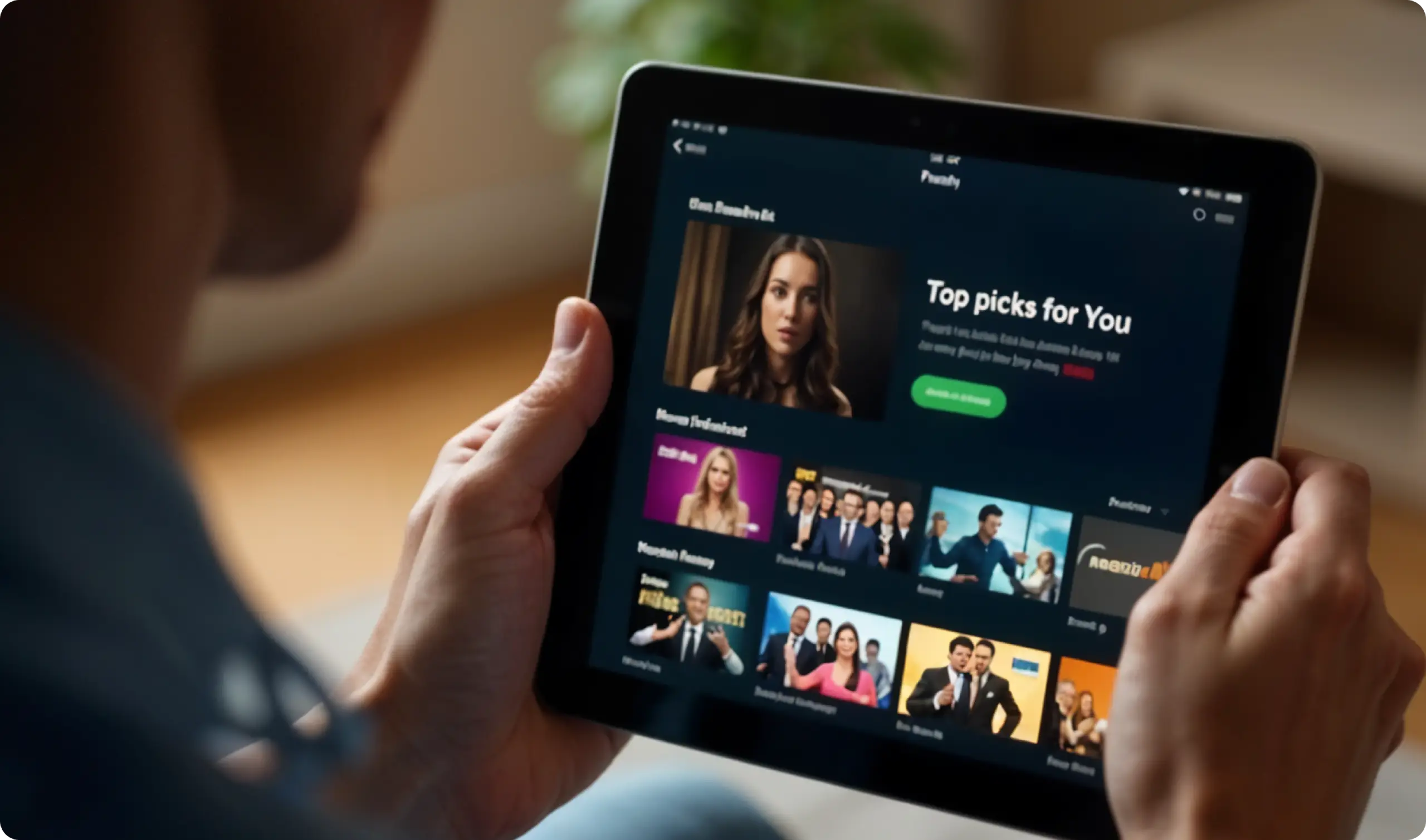
We are all sailing in the uncharted waters. Each day, each week we try to gauge the impact of COVID-19 on the business and society. This ambiguity leads to many questions. YUJ Designs having worked as a remote UX consultant for more than a decade, did not face difficulty in adapting to the social distancing in terms of business continuity. Though, this was not the case with everyone. Sensing this situation, YUJ designs decided to come out and help the design community with the knowledge and skills they have, that might help others sustain through the times. Make sense of the situation and take informed decisions.
An open dialogue about remote UX has been our gateway into understanding the present state of our design community. Throughout all the conversations with our design counterparts, we came to know that a lot of people are facing challenges in understanding how remote user research can be done effectively.
Remote research and testing are techniques of eliciting and evaluating user behaviour patterns.
Here’s a practical guide to remote user research for all the design-enthusiasts out there who are trying to figure out how to continue their work through these unexpected times.
Empathy. Begins with curiosity.
Remote User research does not mean we lose out on understanding the nuances of the user’s behaviour pattern and choices. It is very important to focus on what we can do to gain optimum results. What are the possibilities? How can we adapt our processes for the new reality? What technologies can we use to shift a research session to virtual? How can we remain working efficiently while also connecting as humans? This is all about tapping into sources of creativity and problem solving to efficiently gain useful results.
When managing user research sessions, it is necessary to know what the user is going through. In order to establish a good rapport with the user, to help the user express their opinions freely – the best response you can give is ‘Tell me more’.
Goal-driven research. Clarity of purpose of user research.
A clear understanding of research goals is a requisite by remote research teams. In order to do that, set a research goal by making a hypothesis. Remember user researches are usually wider. But, can be tailor-made to certain design hypothesis. e.g.- how users want to be treated when on-boarding? Do they prefer all the information up-front?
The user research goals are usually multi-layered.
- Over-arching goals are always to understand their likes, dislikes, challenges, preferences
- Expectations of engaging with the system. Emotional expectations of interacting with the app. This is very important in order to provide a design for the users, where they may experience the ‘Aha!’ moment and feel delight.
User Profiles. How do you gather the participants?
Select the user participants by running a formal screener. and arriving at different study guides based on each user persona. Once that is done, the next crucial step is to get the right user participants for online studies. These steps will give your confidence a boost and will give you a control over the studies and its results.
Study Guides. Pointers not questionnaires.
Once you define the research goals, you can define the study guide for each of the profiles. The questions you may ask users from one profile may differ from the questions you may ask another. e.g.- The questions for an influencer will be different from the questions for a naive senior citizen using the app first time.
Strike up a Conversation! It’s not an interview!
Always remember that it should not be an interview. An interview adds a negative connotation of being judged. A fear of being evaluated. An interview may invoke the memories of being evaluated for a school test, job interview etc. leading to inconclusive data. Instead, treat the meeting as a conversation for the purpose of data gathering.
Important thumb-rules of remote user research
Remote or not, these are some important thumb-rules that will ensure the quality of your research.
- Always ask open-ended question. Ask what do you think about going on a pilgrimage and not would you go on a pilgrimage, yes or no?
- Understand the gaps in the user’s journey. Try and identify the insufficient or inappropriate design of UX. So, that once you’re aware of the pain area, you can solve the problem even before the user realizes.
- It is not just about organising the insights or categorising the information. Make co-relations between what the user said, and what the business goals are. Don’t dilute the data. Categorize the insights according to the value addition they’ll provide to business goals, or UI design or influence the way the business services the user or the user flow/ design changes that the user desires.
Remote research and testing can add substantial value for businesses such as, reaching a wider audience. No wonder it is a cost effective option. At the same time, the research can be enriched by the review comments that multiple people can provide without leaving their homes. This will contribute to richer design quality. And this has proved to be beneficial to us and many of our clients in the past. If you wish to reach out to understand the feasibility and our processes in depth, do contact us.






